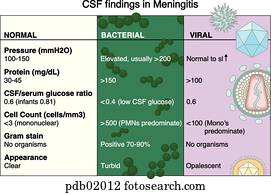

(Middle row) Contrast enhanced MRI showed prominent leptomeningeal enhancement at the left occipital convexity, perivascular enhancement in bilateral thalamus and basal ganglia and bilateral choroid plexus enhancement. (Upper row) FLAIR imaging shows high signal intensity at the bilateral basal ganglia and thalamus, white matter of left occipital lobe, left hippocampus and left cerebellum (not shown). However, it closely coincides with period of events of CM-IRIS (grey squares).ī. Although in first event of CM-IRIS, both increased than baseline, in second events of CM-IRIS, total protein only increased than baseline. (Lower right) Baseline levels of CSF WBC counts and total protein are low as 12 cells/µL and about 58 mg/dL respectively. (Lower left) While baseline levels of CSF and serum cryptococcal antigen titer are as high as 1:512, these levels tend to be lower at the events of CM-IRIS (grey squares). (Upper right) Before events of CM-IRIS, Cryptococcus neoformans was already eradicated in the order of blood culture, CSF indian ink staining and CSF culture. (Upper left) HIV RNA burden is rapidly decreased after ART initiation and CD4+ T cell counts tend to increase steadily. Trend graph of patient's laboratory results. Paradoxical CM-IRIS in a 26-year-old HIV-infected male patient.Ī. Cryptococcus neoformans was not cultured in blood but CSF study was not performed ( Fig. Three months after ART initiation, CD4+T-cell count increased to 89 cells/µL and HIV RNA load decreased rapidly to 28 copies/mL. One week after on amphotericin B, ART was started although Cryptococcus neoformans was still cultured in CSF. In serum, the initial CD4+T-cell count was low (35 cells/µL) and HIV RNA load was high (59493 copies/mL). Also, latex agglutination tests that detect antigens of Streptococcus pneumonia, Neisseria meningitides, Haemophilus influenza type b, Listeria monocytogenes, Group B Streptococcus were all negative. But JC virus, Tuberculosis, herpes simplex virus 1 and 2, cytomegalovirus, and varicellar zoster virus could not be detected by polymerase chain reaction. Cryptococcus neoformans was also cultured and stained by Indian ink. Both CSF and serum cryptococcal antigens titers were 1:512. Opening pressure was elevated (53 cm H 2O). In cerebrospinal fluid (CSF) analysis, increased white blood cell (WBC) count (12 cells/mm 3), increased total protein (58 mg/dL) and decreased glucose concentration (11 mg/dL) were noted. On brain MRI and CT images, pathologic signal and density alteration was not detected. Two years ago, he had been diagnosed with AIDS in another hospital, but had not taken any ART. In April 2015, a 26-year-old man was admitted due to visual disturbance, left sided headache and mental change. In the following section, we report a case of paradoxical CM-IRIS that well matches the clinical findings with MR findings during three years follow-up of a HIV infected patient and new MRI finding is also introduced to help distinguish them. Therefore, it is important to distinguish paradoxical CM-IRIS and CM relapse because they may require different treatment. CM relapse is disease progression due to ongoing immunosuppression mimicking its symptoms. Paradoxical CM-IRIS has been presumed as a result from vigorous immune responses to pathogen due to dysregulation of immune restoration. Mortality of CM-IRIS has been reported to be nearly twice that of patients with CM without IRIS ( 3). Incidence of paradoxical CM-IRIS have been reported about 13–30% of patients with CM surviving to receive antiretroviral therapy (ART) ( 2). According to International Network for the Study of HIV-associated IRIS (INSHI), there are two forms of cryptococcal meningitis immune reconstitution inflammatory syndrome (CM-IRIS): paradoxical CM-IRIS and unmasking CM-IRIS ( 1).


 0 kommentar(er)
0 kommentar(er)
